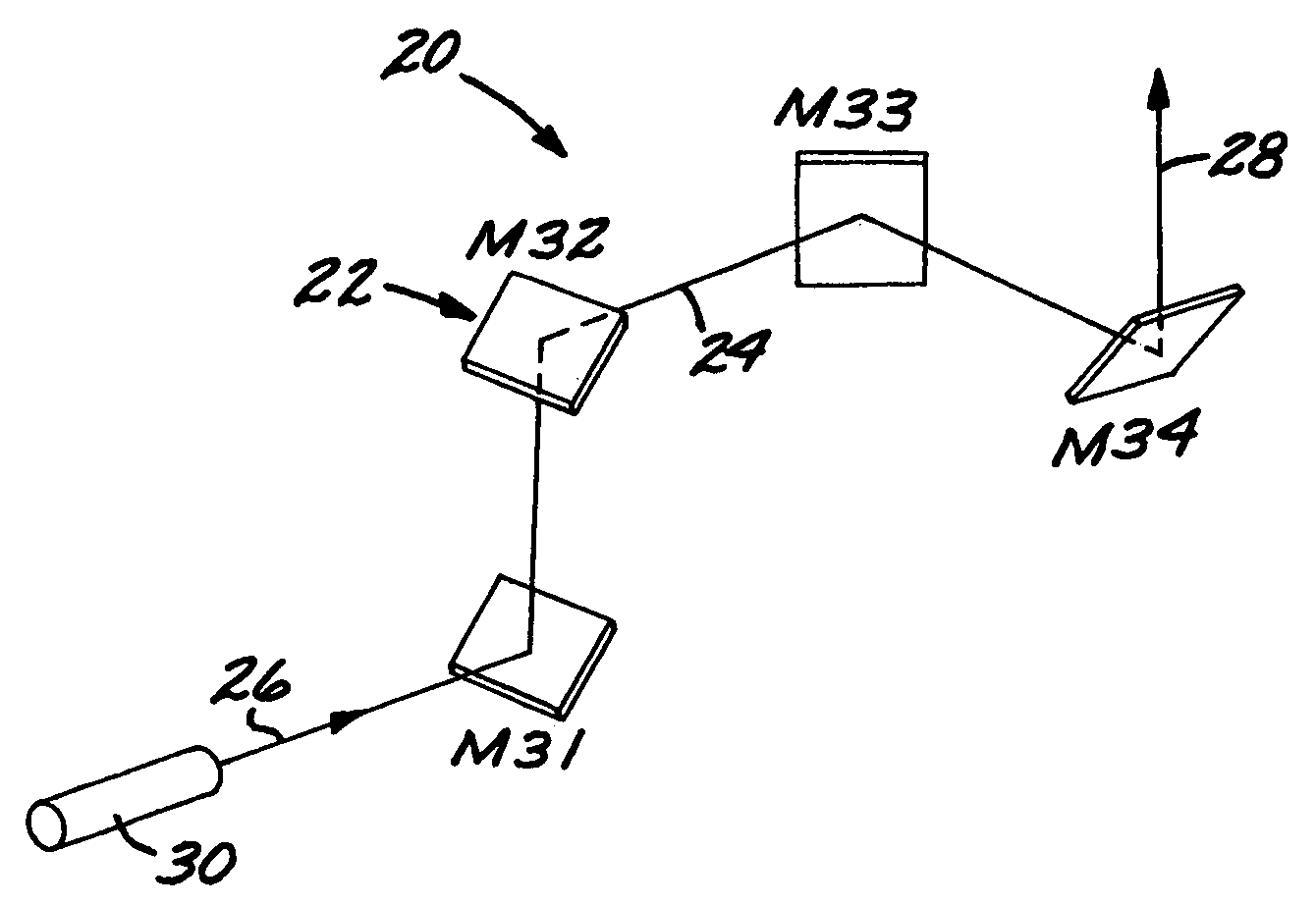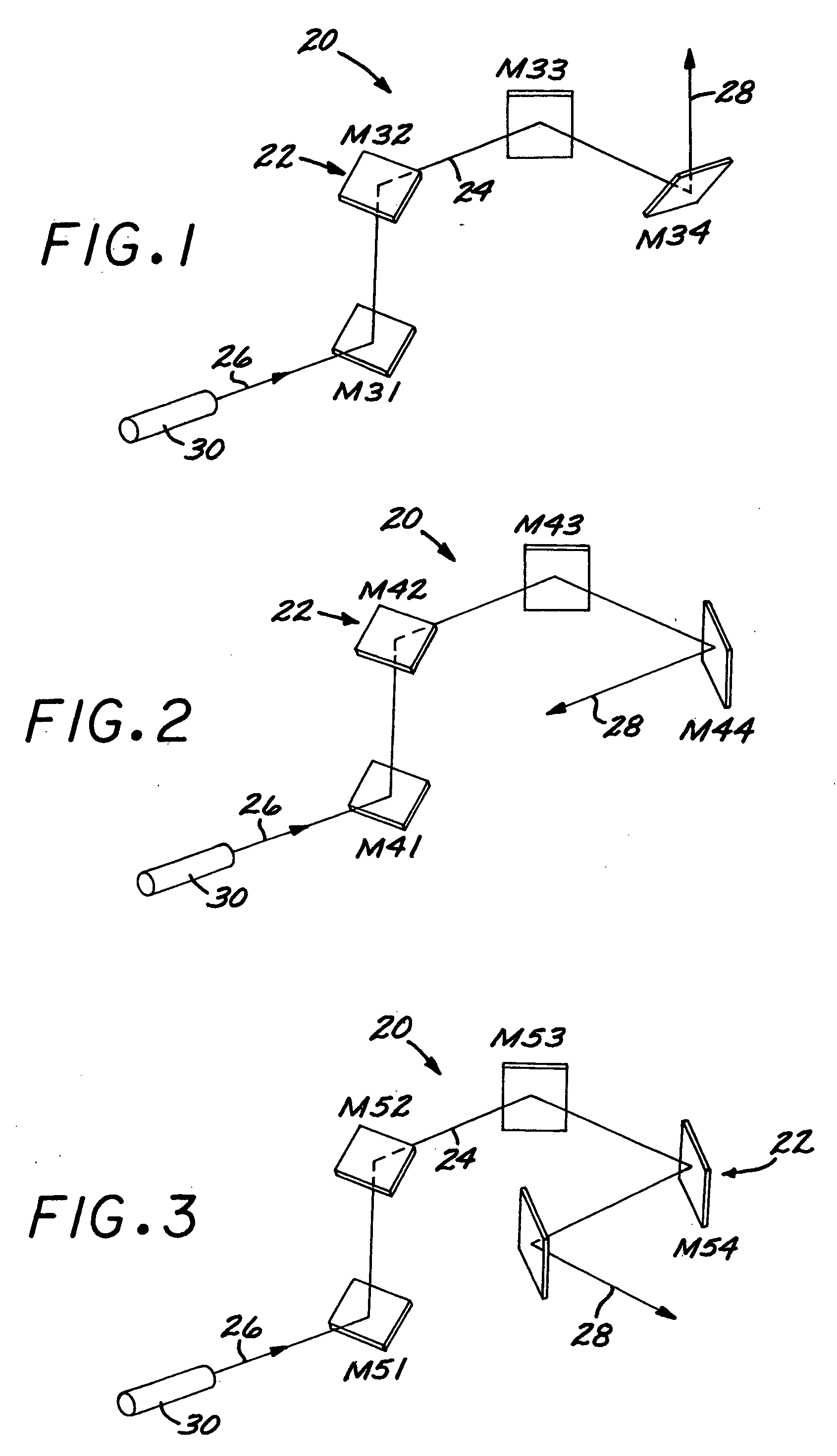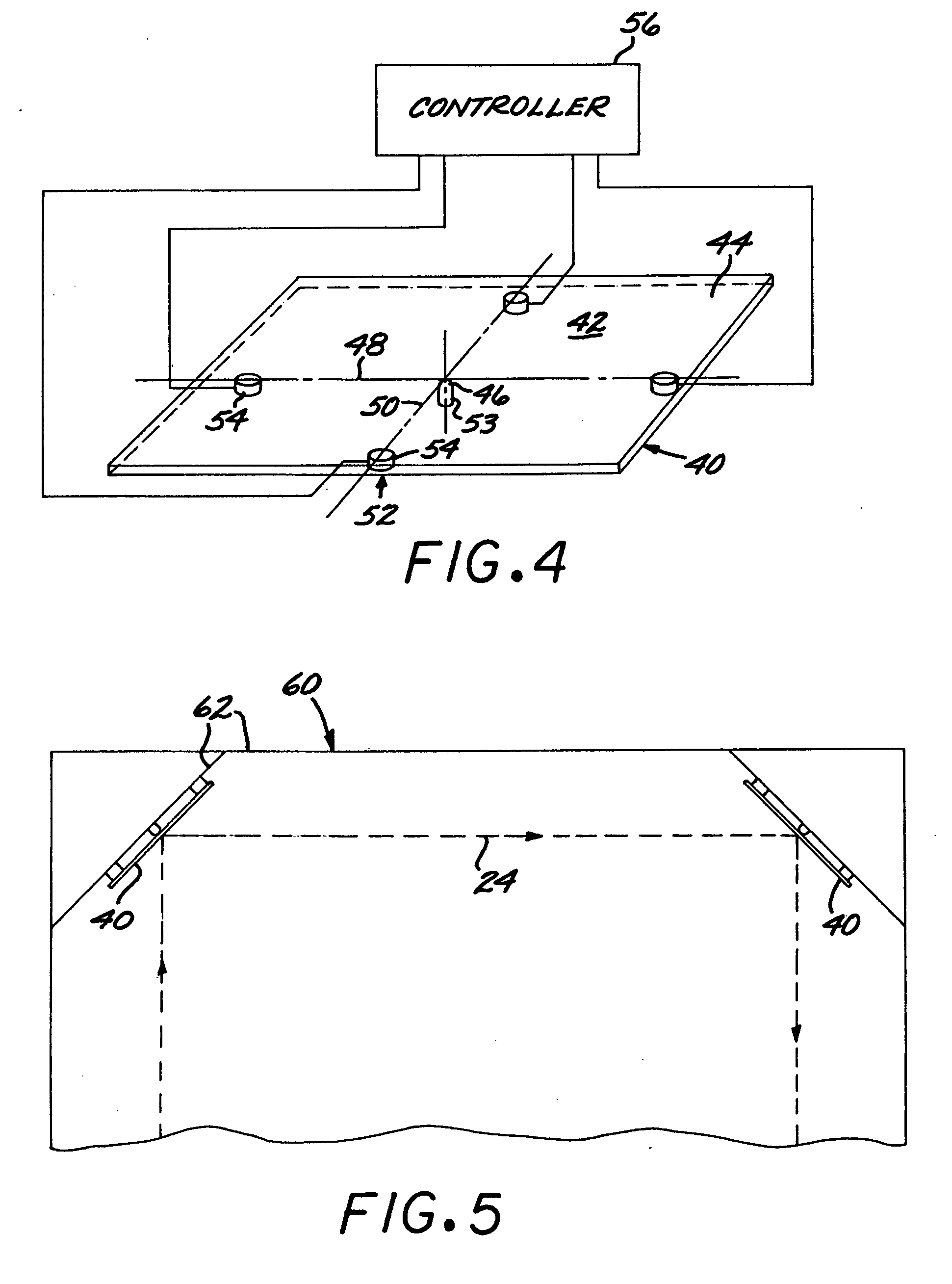Beam-steering apparatus having five degrees of freedom of line-of-sight steering
a beam-steering apparatus and line-of-sight steering technology, which is applied in the direction of mountings, instruments, mirrors, etc., can solve the problems of large apparatuses that provide five degrees of freedom of beam-steering, difficult image analysis, and high cost, so as to keep the size and mass of the beam-steering apparatus small, low power consumption, and low inertia
- Summary
- Abstract
- Description
- Claims
- Application Information
AI Technical Summary
Benefits of technology
Problems solved by technology
Method used
Image
Examples
Embodiment Construction
[0028]Each of FIGS. 1, 2, and 3 depicts an example of a five-degree-of-freedom beam-steering apparatus 20. The beam steering apparatus 20 includes a set 22 of planar tiltable mirrors. The planar mirrors of the set 22 of planar tiltable mirrors are positioned to define a radiation (usually light) beam path 24 that reflects therebetween with a light input 26 to the set 22 of mirrors and a light output 28 from the set 22 of mirrors. There is typically a light transceiver 30 at the light input 26 or the light output 28. If the light transceiver 30 is at the light input 26 as illustrated in the figures, the light transceiver 30 is preferably a light source such as a laser. If the light transceiver 30 is at the light output 28, the light transceiver 30 is preferably a light receiver such as an imaging detector. For clarity, the following discussion will address the case where the light transceiver 30 is a light source, so that the light output 28 is the steerable line-of-sight beam. Under...
PUM
 Login to View More
Login to View More Abstract
Description
Claims
Application Information
 Login to View More
Login to View More - R&D
- Intellectual Property
- Life Sciences
- Materials
- Tech Scout
- Unparalleled Data Quality
- Higher Quality Content
- 60% Fewer Hallucinations
Browse by: Latest US Patents, China's latest patents, Technical Efficacy Thesaurus, Application Domain, Technology Topic, Popular Technical Reports.
© 2025 PatSnap. All rights reserved.Legal|Privacy policy|Modern Slavery Act Transparency Statement|Sitemap|About US| Contact US: help@patsnap.com



